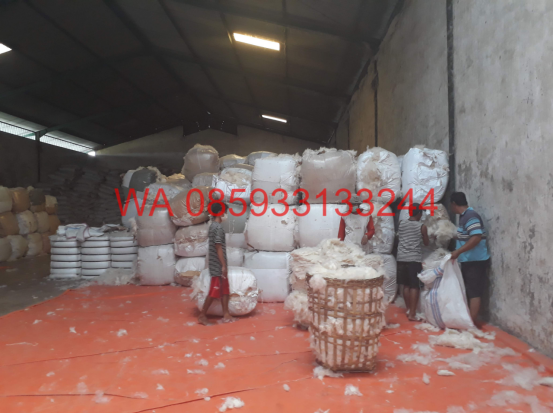You might hear kapok as a pillow or bed stuffing. Indeed, that is true. But this natural plant-based material holds numerous potentials, including for textile industries. So, many Kapok manufacturers try to figure out the possibilities to make spin it. So, does it possible to spin kapok and create a kapok-made fabric? Yes, it is. Here is some of the explanation for you.
About The Kapok Fibre

Before delving deeper into the textile possibilities, you should understand that kapok fiber is quite different from cotton. Kapok has a hollow core, which makes it lightweight and way lighter than cotton. It is very good for insulation but unfortunately has a low strength. Together with the short length (around 03 to 1.25 inches or 0.8 to 3.2 cm), it is unfit for spinning.
However, that particular idea and thought are outdated. The old 1986 research told that the wide hollow lumen, smooth surface, brittle and slippery properties make it very hard to spin. But one thing for sure, people still consider Kapok fiber as a great filling material. It is especially true when considering the soft and comfy nature made by its buoyancy properties.
The Spinning Of Kapok
As explained before, spinning kapok is considered as impossible. But as the technologies advanced, the spinning of 100% kapok is still hard to do. Proven by the 2008 research by Yang and Jin, the spinning properties of kapok can be increased using the blended method or through improved sizing. This method is possible when pure Kapok will be mixed with different materials.
It could be cotton, poly (vinyl alcohol), or acid-modified starch. From many experiments and ideas, it has been concluding that blending kapok with cotton is largely successful. It creates the process easier and creates high-quality yarn. However, kapok manufacturers should make sure the blended content should be in the right size.
In this case, the content of the kapok should not be more than 50% while the other material should be higher to counter the lack of fiber. The blending ratios should be around 20:80, 40:60, 50:50 cotton/kapok ratio. There are also possible to blend kapok with other petroleum-based fibers, such as nylon, polyester, spandex, etc. But the result is not as good as kapok and cotton.
The Result

The 70:30 cotton/kapok ratio is known as kapok jersey fabric. The jersey knit has a characteristic of thin, comfortable, breathable, and suitable for under layer cloth. Most of the time, the combination also creates a soft, silky touch for the body. That is why the production is quite loved.
Another interesting about this combination is the properties themselves. When the kapok and cotton blended, the blended yarn tenacity ad regularity is significantly decreased. This aspect creates the possibility of spinning yarn even bigger because the extensibility is increasing as well. Thus, the manufacturer only needs a great composition to create the yarn.
All in all, you can conclude that kapok is one of the most versatile natural fiber out there. It is good as kapok fiber filling, and the manufacturer can spin it with a blended method to create a high-quality textile. While it might not possible to create 100% kapok textile, but the blended method has proven that kapok is versatile. Thus, for more information or product, you can check kapokfibersuppliers.com

